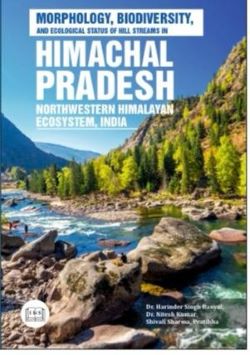harinder singh banyal nitesh kumar (1 Ergebnisse)
Suchfilter
Produktart
- Alle Product Types
- Bücher (1)
- Magazine & Zeitschriften (Keine weiteren Ergebnisse entsprechen dieser Verfeinerung)
- Comics (Keine weiteren Ergebnisse entsprechen dieser Verfeinerung)
- Noten (Keine weiteren Ergebnisse entsprechen dieser Verfeinerung)
- Kunst, Grafik & Poster (Keine weiteren Ergebnisse entsprechen dieser Verfeinerung)
- Fotografien (Keine weiteren Ergebnisse entsprechen dieser Verfeinerung)
- Karten (Keine weiteren Ergebnisse entsprechen dieser Verfeinerung)
- Manuskripte & Papierantiquitäten (Keine weiteren Ergebnisse entsprechen dieser Verfeinerung)
Zustand Mehr dazu
- Neu (1)
- Wie Neu, Sehr Gut oder Gut Bis Sehr Gut (Keine weiteren Ergebnisse entsprechen dieser Verfeinerung)
- Gut oder Befriedigend (Keine weiteren Ergebnisse entsprechen dieser Verfeinerung)
- Ausreichend oder Schlecht (Keine weiteren Ergebnisse entsprechen dieser Verfeinerung)
- Wie beschrieben (Keine weiteren Ergebnisse entsprechen dieser Verfeinerung)
Einband
- alle Einbände
- Hardcover (1)
- Softcover (Keine weiteren Ergebnisse entsprechen dieser Verfeinerung)
Weitere Eigenschaften
- Erstausgabe (Keine weiteren Ergebnisse entsprechen dieser Verfeinerung)
- Signiert (Keine weiteren Ergebnisse entsprechen dieser Verfeinerung)
- Schutzumschlag (Keine weiteren Ergebnisse entsprechen dieser Verfeinerung)
- Angebotsfoto (1)
Sprache (1)
Preis
- Beliebiger Preis
- Weniger als EUR 20 (Keine weiteren Ergebnisse entsprechen dieser Verfeinerung)
- EUR 20 bis EUR 45 (Keine weiteren Ergebnisse entsprechen dieser Verfeinerung)
- Mehr als EUR 45
Gratisversand
- Kostenloser Versand nach USA (Keine weiteren Ergebnisse entsprechen dieser Verfeinerung)
Land des Verkäufers
Verkäuferbewertung
-
Morphology, Biodiversity and Ecological Status of Hill Streams in Himachal Pradesh, Northwestern Himalayan Ecosystem, India
Verlag: Indu Book Services Pvt Ltd, 2024
ISBN 10: 8119907337 ISBN 13: 9788119907335
Anbieter: Vedams eBooks (P) Ltd, New Delhi, Indien
EUR 46,44
Währung umrechnenEUR 17,50 für den Versand von Indien nach USAAnzahl: 5 verfügbar
In den WarenkorbHardcover. Zustand: New. The book entitled Morphology, Biodiversity, and Ecological Status of Hill Streams in Himachal Pradesh, Northwestern Himalayan Ecosystem, India is an outcome of ample research work done by the authors over a span of almost ten years. The book offers comprehensive compendium on various biological aspects of hill streams in Himachal Pradesh, nestled within the Northwestern Himalayas, India. This book offers detailed analysis of morphology, biodiversity, and ecological dynamics of hill streams besides, shedding light on their significance. Furthermore, the book provides detailed analysis of structure, formation, hydrological processes, and ecological features of these water bodies. The authors have particularly given insight into the diverse array of habitats found within these streams, ranging from cascading waterfalls to serene pools, and scrutinizes how these physical characteristics influence the ecological dynamics within the stream. Based on said characteristics features streams are classified into different categories. Furthermore, the book provides scientific information related to the rich biodiversity of the hill streams, documenting the numerous species of aquatic flora and fauna ranging from colorful fish species to microscopic organisms such as plankton, the diversity of life within these water courses is fascinating and indispensable for the ecological integrity of the region. The book initially provides a pertinent overview of the geographical and geological features of Himachal Pradesh, setting the stage for understanding the unique characteristics of the hill streams of the state. It then delves into the morphology of these water bodies, examining their physical attributes such as flow patterns, substrate composition, and channel dynamics and then it focuses on the ecology. Through detailed analysis and scientific methodologies, the authors provide a deep understanding of various factors which influence the overall habitat structure and ecological functions of the streams. Each chapter offers detailed understandings of the taxonomy, behavior, and ecological status of flora and fauna, highlighting the interconnectedness of species within the ecosystem. Through extensive field surveys, water quality assessments, and ecological modeling, the authors have evaluated the health and resilience of these ecosystems. Additionally, the book addresses the various challenges faced due to numerous anthropogenic activities such as deforestation, development of hydropower projects, agricultural runoff etc. posing serious threats to the stream health and biodiversity and strategies for mitigating these threats. Invaluable approaches for sustainable management of hill streams including role of stakeholders to safeguard these vital waterbodies have also been discussed.


